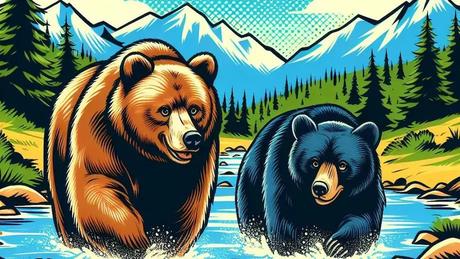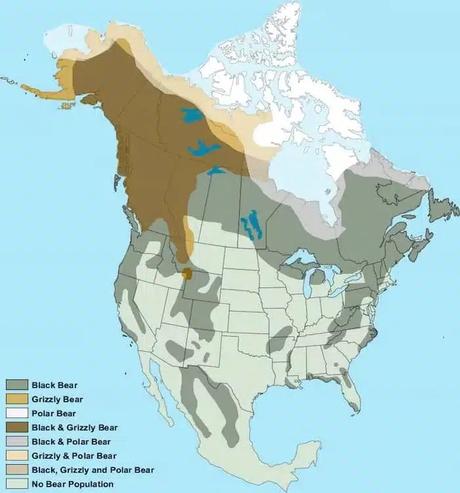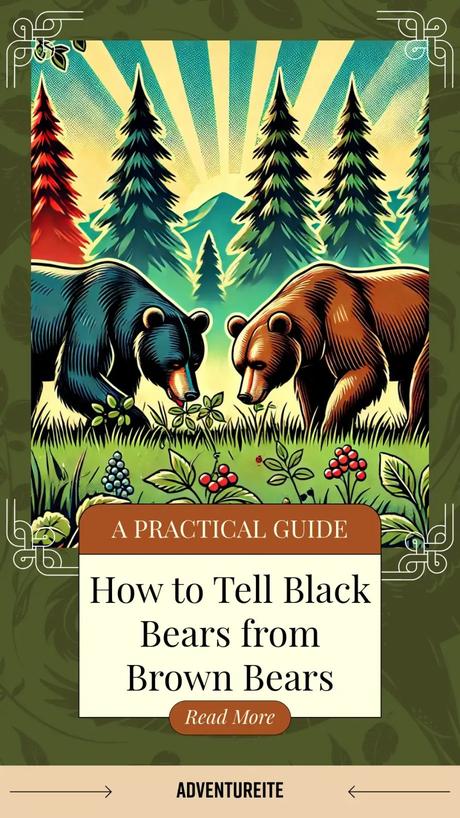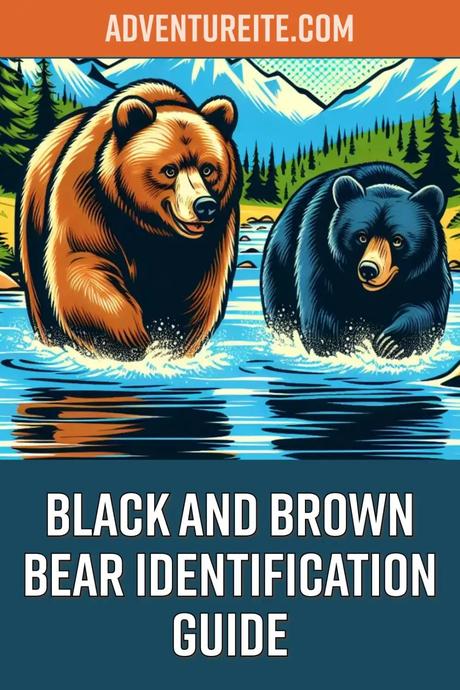When we first moved to New Mexico, we were both thrilled and a little nervous about exploring the wilderness. One of our biggest worries? Bears. The thought of encountering one on the trail was intimidating, and I still remember packing bear spray like it was a magic talisman. But over time, as we learned more about bears—their habits, behaviors, and how to recognize them—our fear turned into respect. These days, we hike comfortably in areas with bear populations, always with bear spray available, and a deep appreciation for these incredible animals.
We put together this guide so you can hit the trails with confidence. When you come across a bear knowing its species will help you predict how they will behave. Whether you’re a seasoned hiker or just starting out, this friendly and practical guide will give you the tools to share the wilderness responsibly with its most iconic residents.

Bear Attacks Are Rare
Let’s start with some good news: attacks on people are really rare. Millions of people hike and camp in bear country every year without incident. Bears generally avoid humans and prefer to keep their distance. That said, staying aware and prepared is key. Follow local guidelines, stay alert, and check out our Bear Safety for Hikers Guide for practical tips. With a little knowledge and preparation, you can explore bear country with confidence.
How to Tell Brown Bears and Black Bears Apart
Telling bears apart isn’t always easy, especially since their fur colors overlap. The trick is to focus on physical features and behaviors. Here are the main differences:
Shoulder Hump Prominent None
Claws Long, straight Shorter, curved
Ear Shape Short, rounded Tall, pointed
Facial Profile Concave Flatter
Body Proportion Shoulders higher than rump Rump higher than shoulders
Brown Bear Characteristics
Large and muscular, with a distinctive shoulder hump that sets them apart from black bears. Weighing up to 1,500 pounds and standing 10 feet tall on their hind legs, they have a concave facial profile and short, rounded ears. Their long, straight claws are built for digging and fishing, making them highly adaptable hunters. Brown bears are often solitary, but they gather in places with abundant food, such as salmon streams, especially during spawning season. Despite their size, they’re surprisingly agile, excelling at swimming and climbing.
Black Bear Characteristics
Generally smaller, weighing between 100 and 600 pounds, they lack the prominent shoulder hump that is characteristic of brown bears. Their ears are taller and more pointed, and their facial profile is flatter compared to the concave profile of brown bears. Black bears are excellent climbers, often retreating up trees for safety when they feel threatened. Their shorter, curved claws are perfect for climbing and gripping. While black bears are usually shy and avoid humans, it’s essential to give them space, especially if you encounter a mother bear with cubs.
Where Bears Live
Black and brown bears live in different parts of North America, and understanding their habitats can help you prepare for your outdoor experiences. Brown bears, often called grizzlies, are found mainly in the Northern Rocky Mountains and the Greater Yellowstone Ecosystem, which includes parts of Wyoming, Montana, and Idaho. There are only about 2,000 brown bears in the lower 48 states, and they live in a much smaller area. Black bears are much more common, with around 300,000 in the U.S., spread across about half of their historical range. This makes black bears the bears most people are likely to encounter.
Alaska Yes Yes Yes
Montana Yes Yes Yes
Wyoming Yes Yes Yes
Idaho Yes Yes Yes
Washington Yes Yes Yes
Note: States not included in this table have only black bears or no bears at all.
Alaska is home to the largest populations of both black and brown bears, making it a unique destination for nature lovers. In the western U.S., states like Montana, Idaho, and Washington are some of the few places where both species live side by side. Conservation efforts have been successful in some areas, like the Greater Yellowstone Ecosystem, where the grizzly bear population grew from just 136 in 1975 to nearly 965 in 2022. Understanding where bears live helps you stay informed and enjoy the outdoors responsibly.

Please Share this on Pinterest


Final Thoughts
Exploring bear country is one of the most rewarding ways to connect with nature. I remember one hike with our dog Drax when we found a fresh bear track. That moment was both awe-inspiring and humbling, reminding us that we were in their world. We never saw another sign of the bear but it was still pretty exciting. In fact that was one of the things that inspired us to learn to identify animal tracks
